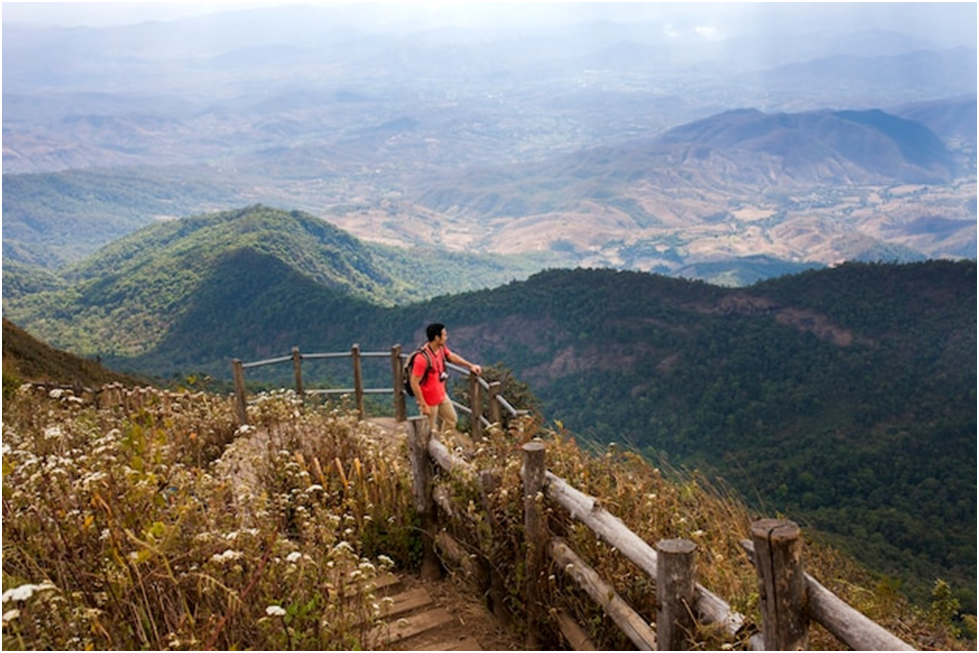Nepal Trekking Tours: What You Need to Expect
Desire—you get that hit in the heart when someone brags about their Nepal trekking tour. It's a special journey, away from the usual path, into a different world and time, and you need to be really fit for it. Nepal attracts people with its spirit and culture, including the 14 massive mountains that are above 8,000 meters.
When choosing to go on a trek in Nepal,
you have several options: trek alone, join a tour group, or travel with your
own family/friends. Local travel agencies in Lhasa can help plan the journey to
suit your budget and travel style.
That said, there are some basic tips and
information you need to know to prepare for your Nepal trekking tour,
regardless of your goal or schedule. Although
the details change based on your chosen trek, the season you go, and the agency
you pick, this summary offers an overall picture of what lies ahead.
Scenic views and natural beauty
Nepal offers a breathtaking backdrop of
nature with its impressive landscapes. Dominated by the Himalayas, these
mountain ranges display the tallest peaks found on Earth. Among these, the
well-known Mount Everest, Annapurna, and Kanchenjunga attract those eager to
witness their grand elevations closely. As you walk along Nepal’s paths, you
will see views that are astounding at each turn. The trails wind through
valleys with lovely scenes and dense, peaceful woods. Along the way, you will
come upon clear glacial lakes that reflect the nearby mountains to give the
place a magical feel.
Rich biodiversity
Aside from the stunning views, a major
highlight of Nepal's natural charm is its vast array of plants and wildlife.
The country hosts a variety of species, from colorful rhododendron forests to
ancient oak trees, displaying a vivid mix of colors and life. Wildlife lovers
can find rare animals like the red panda, snow leopard, and Bengal tiger living
in their natural surroundings.
Adventure and challenge
Nepal, with its numerous trekking paths
and mountains to climb, offers both excitement and serious challenges. Hiking
here is not easy, as it pushes thrill-seekers to their limits and allows them
to feel the joy of mastering difficult trails.
Likewise, the country has many trekking
routes that vary in difficulty from easy to tough, each bringing different
types of challenges. Trekking in high-altitude regions needs both strength and
mental stability as you go through steep ascents, rocky terrains, and
ever-changing weather conditions.
In addition, Nepal has many trekking
paths for all levels of hikers. From the famous trek to Everest Base Camp to
the less-traveled paths of Upper Dolpo, there is something for everyone. These
trails range in difficulty, so you can pick one that fits your fitness and
likes. Some, like the Annapurna Circuit, are very tough, needing weeks of
hiking and crossing high passes. Others, like the Langtang Valley trek, are
shorter but still offer a thrilling walk-through beautiful valleys and green
forests.
Meeting like-minded people
One of the most rewarding aspects of
joining a Nepal trekking tour is
the opportunity to meet like-minded individuals from all over the world. As you
traverse the scenic trails and tackle the challenging routes, you will often
find camaraderie with fellow trekkers who share your passion for adventure and
the great outdoors. These encounters can lead to lasting friendships, providing
a sense of community and shared experience that transcends borders. Whether you
are bonding over stories of past adventures, offering each other support during
tough climbs, or simply enjoying a meal together at a teahouse, the connections
you make on your trek can significantly enrich your journey.
Health & altitude sickness
Now, while all of the above elements make
the Nepal trekking tour an unforgettable
experience, it is essential to be aware of the potential challenges. At high
altitudes, you may face health risks such as:
● altitude
sickness, also known as acute mountain sickness, which is caused by the reduced
level of oxygen at high altitudes
● hypothermia due
to the cold climate and changing weather conditions
Some symptoms of altitude sickness
include headaches, nausea, and fatigue. To avoid these dangers, you should take
precautions like acclimatizing to the altitude and staying hydrated and
well-fed. A reputable local travel agency will be familiar with these risks and
advise you on how to prevent them.
Also, never forget to visit your doctor
in advance before booking your trip. They can offer valuable advice and check
if you are fit enough to join the tour.
A Nepal trekking tour is a chance to disconnect from your
daily routine and reconnect with nature and yourself. But remember to be
prepared physically and mentally for the journey, listen to your body, and
enjoy every moment of this incredible adventure.
For more information on Nepal trekking tours or to book your trip with a reputable
local travel agency, visit Tibet Shambhala Adventure Co. Ltd, which is the gold
standard for adventure travel in Tibet, offering a wide
range of tours and treks to suit various interests and budgets. Call their team
today at +977-1-471-0233 to start planning your tour!


Comments
Post a Comment